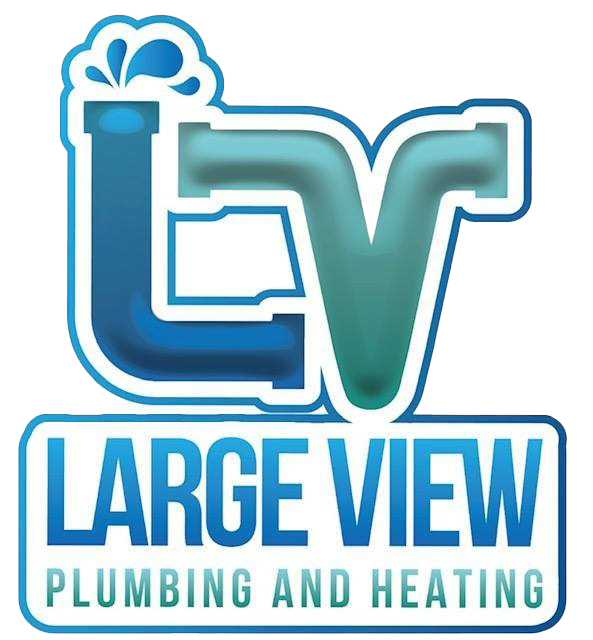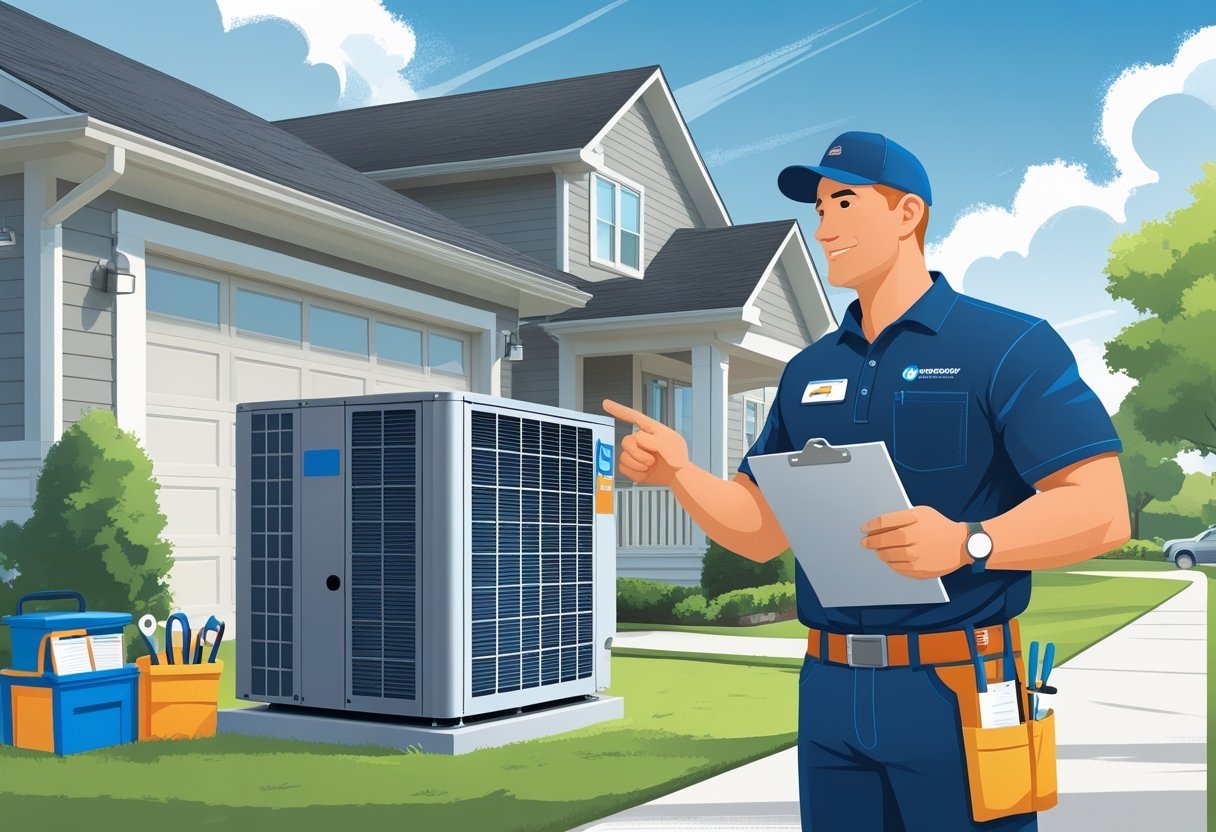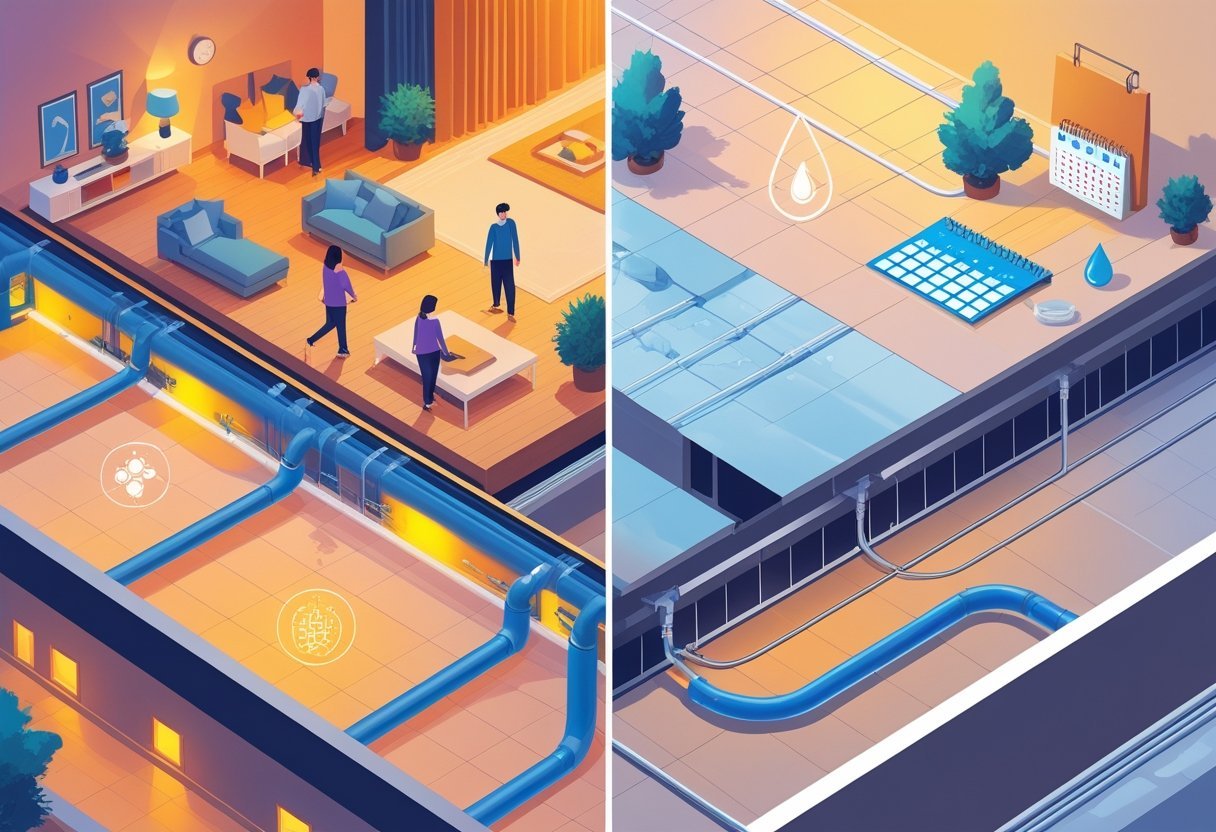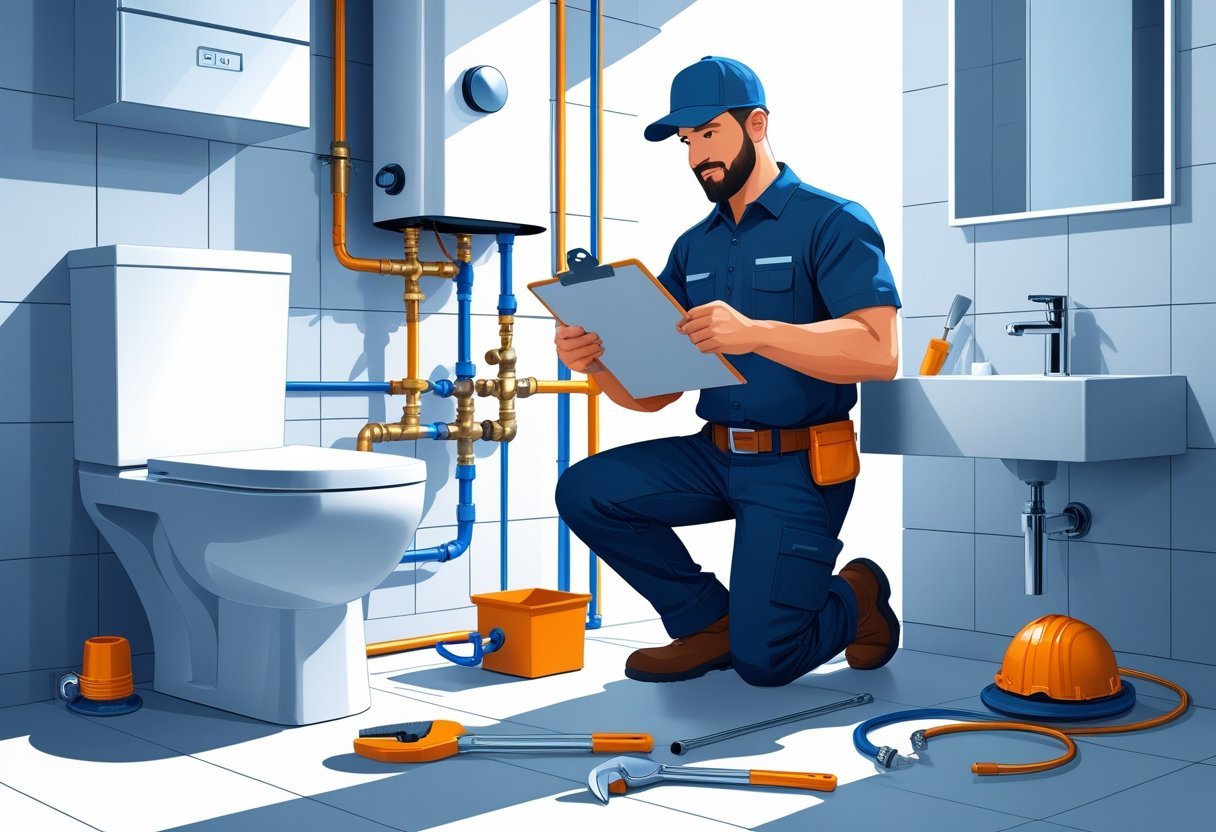Older houses come with unique challenges when it comes to heating. Drafty windows, uneven floors, and outdated insulation can make keeping your home comfortable difficult without the right system. The best heating solutions for older homes combine modern technology with careful installation to enhance comfort while preserving your home’s character.
You might be wondering which options suit your specific needs and how to upgrade without major renovations. Whether you want to install radiant floor heating or improve forced-air systems, choosing the right approach depends on your home’s layout and your budget. Large View Plumbing & Heating, serving North Shore, Massachusetts, offers expert guidance to help you select and maintain heating solutions tailored to older houses.
By working with experienced professionals, you ensure your home stays warm and energy-efficient through every season. Trusting a skilled crew like Large View Plumbing & Heating means your system will be installed to the highest standards, giving you peace of mind and reliable warmth year-round.
Key Heating Challenges in Older Houses
Older houses often face specific heating issues that affect comfort and energy bills. You must consider how drafts, outdated systems, and the home’s original design impact the efficiency of your heating solutions.
Drafts and Poor Insulation
Drafts are common in older homes due to gaps around windows, doors, and in the building envelope. Many older houses were built before modern insulation standards, resulting in inadequate or deteriorated insulation in walls, attics, and basements. This allows heat to escape and cold air to enter, making your heating system work harder.
Sealing these leaks and upgrading insulation can significantly reduce energy consumption. You might notice uneven warmth and higher utility bills caused by air infiltration. Addressing drafts often involves weather-stripping, caulking, and adding insulation where possible to improve overall heating efficiency.
Outdated or Missing Ductwork
Many historic homes were constructed before central HVAC systems were standard, so they frequently lack ductwork or have old, leaky ducts. Without proper ducting, forced-air heating systems can’t distribute warmth effectively throughout your home.
Installing new ductwork can be invasive and costly, sometimes damaging historic features. Alternatively, you might consider ductless heating options like mini-split heat pumps. These can supplement your main system without requiring ducts, improving comfort and lowering energy use. Professionals like Large View Plumbing & Heating can assess the best approach for your older house’s specific needs.
Historic and Architectural Limitations
Older houses often have elements like high ceilings, large windows, or unique layouts that affect heat retention. Thick stone or brick walls can hold cold temperatures, while open floor plans might hinder the heat from circulating evenly. These factors complicate heating and make some conventional solutions less effective.
Maintaining the home’s character might limit extensive upgrades such as adding large radiators or replacing original windows. You must balance preserving architectural features with improving energy efficiency. Solutions tailored to historic homes often require professional evaluation to avoid compromising structural or aesthetic integrity.
Evaluating and Selecting the Best Heating Options
Choosing the right heating system for your older home requires careful evaluation of what you currently have in place, how efficient potential upgrades will be, and how to maintain the home’s character while improving comfort. Each factor plays a critical role in selecting a solution that ensures effective temperature control without unnecessary energy waste.
Assessing Existing Infrastructure
Start by examining your home’s current heating framework. Older houses may have existing ductwork, radiators, or baseboard heaters that impact your choice of HVAC system. If ductwork is intact and in good condition, a forced air system may be viable. However, many older homes require ductless solutions like heat pumps or high-velocity mini-duct systems to avoid extensive renovations.
You should also evaluate insulation and identify drafts, as these greatly affect heating efficiency. Faulty or outdated infrastructure can reduce energy savings no matter the system you choose. Consulting a professional, such as Large View Plumbing & Heating, can help you assess the suitability of your current setup and identify necessary upgrades before installation.
Considerations for System Efficiency
Efficiency is key to reducing energy costs and environmental impact. Look for HVAC solutions with high SEER (Seasonal Energy Efficiency Ratio) and HSPF (Heating Seasonal Performance Factor) ratings. Heat pumps often provide excellent efficiency because they both heat and cool your home, cutting down on total energy use.
Electric baseboard heaters offer simple installation but tend to be less efficient than modern systems. Boilers with radiators provide steady heat but may lack precise temperature control. Balancing initial costs, ongoing energy savings, and maintenance needs will guide you toward the best fit for your budget and usage patterns.
Balancing Comfort and Preservation
Older homes have unique architectural details that many want to preserve. You should choose heating systems that minimize disruption to these features while enhancing comfort. Options like radiant floor heating or custom radiator installations work well without altering walls or ceilings.
Maintaining even temperature control in varied spaces, such as basements or additions, may require multiple heating zones or hybrid systems. Large View Plumbing & Heating offers tailored solutions to help you upgrade while respecting your home’s historic charm. This approach ensures your living environment stays comfortable year-round without sacrificing the elements that make your house special.
Modern Heating Solutions for Older Houses
Upgrading heating in older homes often means overcoming challenges like limited ductwork and uneven heat distribution. Modern systems designed for flexible installation and enhanced efficiency can help you maintain comfort without compromising the character of your older home.
Ductless Mini-Split Systems
Ductless mini-split systems are ideal if your home lacks existing ductwork or if installing ducts would be disruptive. These systems consist of an outdoor compressor and one or more indoor air-handling units mounted on walls or ceilings.
They provide both heating and cooling with high energy efficiency. Because each indoor unit operates independently, you can control the temperature in individual rooms, saving energy and increasing comfort.
The installation is less invasive than traditional systems and requires only a small hole for refrigerant lines. This makes mini-splits a practical choice for homes with limited space or historic design features.
Large View Plumbing & Heating can expertly install ductless mini-splits to ensure your older home stays comfortable year-round with minimal disruption.
High-Velocity HVAC Systems
High-velocity HVAC systems use smaller, flexible tubing rather than standard ducts. This tubing can be routed through narrow spaces like walls and ceilings of older houses without major renovations.
Because these systems deliver air at high speed, they improve airflow and maintain consistent temperatures throughout your home. The compact design preserves the aesthetic and structure of older builds.
Additionally, high-velocity systems reduce drafts and noise common with older heating methods. The technology suits homes that need a modern upgrade but want to retain their original design elements.
Partnering with a trusted provider like Large View Plumbing & Heating ensures proper sizing and installation, optimizing system performance and your home’s comfort.
Traditional and Alternative Heating Systems
Choosing the right heating system for an older home requires balancing efficiency, comfort, and how well the system fits into your house’s structure. You might consider systems that offer steady, consistent warmth or those that deliver heat with improved energy savings and less disruption.
Boiler and Radiator Systems
Boilers are a common traditional heating method ideal for older homes. They heat water, which then circulates through radiators to warm your living spaces. Radiators provide steady, even heat without the drafts common in forced-air systems.
These systems are durable and can last decades with proper maintenance. However, they often require more space for the boiler unit and piping. If your home still uses radiators, keeping them functional can preserve historic charm while delivering reliable warmth.
Large View Plumbing & Heating, serving North Shore, Massachusetts, specializes in maintaining and upgrading boiler systems so you can enjoy efficient heat without major renovations.
Radiant Heating Approaches
Radiant heating systems deliver warmth directly through floors, walls, or ceilings using electric coils or warmed water tubes. This method heats objects and people in the room rather than just the air, which can feel more comfortable in drafty older houses.
Radiant heating is quiet, energy-efficient, and offers design flexibility with no need for visible radiators or ductwork. Electric and hydronic radiant systems are common, with hydronic favored for whole-house applications. Installation can be invasive, so it’s typically best during a renovation.
With modern radiant solutions, you can upgrade older houses while maintaining aesthetics and improving comfort.
Heat Pumps and Geothermal Options
Heat pumps are increasingly popular alternatives that provide heating and cooling by transferring heat instead of generating it. Air-source heat pumps are easier to install but may be less efficient in very cold climates.
Geothermal heat pumps use stable underground temperatures to heat your home efficiently year-round. Though they have a higher upfront cost, geothermal systems offer significant energy savings and low maintenance. Their discreet nature preserves your home’s historic look.
If you want a modern, eco-friendly heating upgrade, Large View Plumbing & Heating offers expert advice and installation tailored to older homes’ unique needs.
Improving Home Performance for Heating Efficiency
Enhancing how your home retains and distributes heat can significantly reduce energy waste and improve comfort. Small upgrades to insulation and airflow, combined with smarter temperature controls, can optimize your heating system’s overall efficiency.
Upgrading Insulation and Air Sealing
Older homes often lack modern insulation standards, allowing heat to escape through walls, attics, and basements. Focus first on improving attic and wall insulation with materials like spray foam or fiberglass batts, which trap heat more effectively.
Air leaks around windows, doors, and vents also let cold air in and warm air out. Sealing gaps with weatherstripping and caulking is a cost-effective way to reduce drafts and maintain a steadier temperature indoors. This not only prevents heat loss but reduces strain on your heating system.
If you want expert help, companies like Large View Plumbing & Heating specialize in assessing insulation needs, making your older home more energy efficient without sacrificing its character.
Optimizing Existing Ductwork
The condition of your ductwork greatly influences heat distribution. In many older houses, ducts may be leaky, poorly insulated, or improperly sized, wasting heat before it reaches your living spaces.
Start by inspecting ducts for holes or disconnected joints, and seal them with mastic or metal tape. Adding duct insulation, especially in unheated areas like basements or crawl spaces, helps maintain air temperature en route.
Well-designed duct layout avoids excessive bends and long runs, which restrict airflow. Efficient ductwork ensures your heating system runs less often and maintains consistent temperature control throughout your home.
Zoned Heating and Smart Controls
Dividing your home into heating zones allows you to customize temperature settings for different areas, avoiding unnecessary heating in unused rooms. You can install zone valves or separate thermostats linked to your existing system for this purpose.
Pair zoning with smart thermostats that learn your schedule and adjust settings automatically. These devices optimize energy use by lowering heat when you’re away or asleep and maintaining comfort when you’re home.
You can improve both efficiency and convenience this way. Large View Plumbing & Heating can guide you in selecting and installing zoning systems that fit your home’s specific layout and your lifestyle needs.
Maintenance and Long-Term Considerations
When managing heating systems in older homes, keeping efficiency and reliability in balance is essential. Proper evaluation, regular upkeep, and understanding ongoing energy costs all play key roles in maintaining comfort and minimizing future expenses.
Professional Assessment and Installation
Before making any upgrades or replacements, get a professional HVAC assessment. A thorough inspection identifies system inefficiencies, leaks, or outdated components that might cause higher energy bills or unsafe conditions.
Choosing a qualified technician ensures your heating system matches your home’s layout and insulation levels. Large View Plumbing & Heating in North Shore, Massachusetts, offers expert evaluations tailored to older houses, helping you select efficient options that maintain your home’s character.
Proper installation is critical to avoid common issues like improper airflow or duct leakage. A professional will install and calibrate your HVAC system to peak performance, reducing the need for frequent repairs and cutting down on wasted energy.
Routine Maintenance and AC Repair
Regular maintenance keeps your HVAC system running smoothly and prevents unexpected breakdowns. Schedule annual inspections, especially before winter, to check key components like filters, ductwork, and the furnace or heat pump.
Change filters every 1-3 months depending on usage and air quality. Cleaning or sealing ductwork can prevent energy loss and improve air circulation.
If you notice reduced heating efficiency or unusual noises, don’t delay AC repair or HVAC service. Early intervention extends system life and avoids costly emergency repairs. Reliable service providers, such as the Large View Plumbing & Heating team, specialize in maintaining older-home systems with techniques designed to preserve efficiency and comfort.
Evaluating Energy Savings over Time
Track your energy use after installing or upgrading your heating system to evaluate savings. Compare utility bills month to month and season to season to identify improvements.
Use a programmable thermostat to optimize heating schedules and avoid waste. This simple addition often delivers noticeable savings in older homes where insulation or original design may cause heat loss.
Keep a maintenance log detailing service dates, repairs, and parts replacements to anticipate when major upgrades may be needed. Long-term, energy-efficient heating solutions reduce utility bills but require monitoring to ensure performance stays consistent. Investing time here helps balance comfort and cost effectively.
For specific guidance on improving your older home’s HVAC efficiency, access detailed advice on energy-saving HVAC tips for older homes.
Frequently Asked Questions
Upgrading heating in older homes involves strategies like improving insulation, choosing the right system size, and selecting equipment designed for efficiency. You should also consider factors such as your home’s layout, historic features, and energy costs to ensure comfort without excessive expenses.
What are the best energy-efficient upgrades for heating an old house?
Sealing drafts and adding insulation in walls and attics can reduce heat loss significantly. Upgrading to a high-efficiency furnace or boiler and installing programmable thermostats also help keep energy use in check.
Modern heat pumps designed for colder climates offer efficient heating, especially when paired with proper home sealing. Large View Plumbing & Heating can assess your home to recommend the best combination of these upgrades.
How can I keep my 100-year-old house warm in the winter?
Focus on stopping air leaks around windows, doors, and baseboards. Adding storm windows or thermal curtains helps retain heat inside.
Consider upgrading to a zoning system that distributes heat more evenly. Regular maintenance, like cleaning ducts and changing filters, ensures your system operates effectively through cold months.
What is the cost of replacing an old heating system?
Costs depend on system type, size, and installation complexity. On average, replacing an older furnace or boiler can range between $4,000 and $8,000, with variations based on fuel type and efficiency ratings.
Additional expenses might include upgrading ductwork or adding insulation. Obtaining a detailed quote from a licensed company like Large View Plumbing & Heating guarantees a transparent estimate.
Are modern heat pumps effective in historic homes?
Yes, modern heat pumps can provide efficient and reliable heating in older homes, especially those without existing ductwork. Air-source or ground-source heat pumps are good options depending on your property and climate.
However, proper insulation and sealing are essential to maximize performance. Professional installers ensure that your heat pump system matches your home’s unique requirements.
What types of heating systems are suitable for old houses?
Forced-air systems often work well because they can distribute heat through existing or newly installed ducts. Radiant floor heating or baseboard radiators are effective alternatives if ductwork isn’t an option.
Gas, oil, and electric boilers remain viable depending on fuel availability. Choosing the right system depends on your home’s layout and your comfort preferences.
How does the installation of a new heating system in an older home affect its value?
Installing a modern, efficient heating system can increase your home’s market appeal and value. Buyers tend to favor homes with updated HVAC systems that promise lower energy costs and better comfort.
Proper installation and documentation from a reputable company, like Large View Plumbing & Heating, provide assurance that the system meets safety and efficiency standards.






